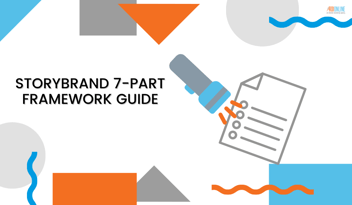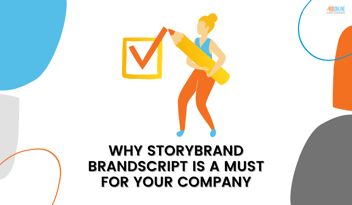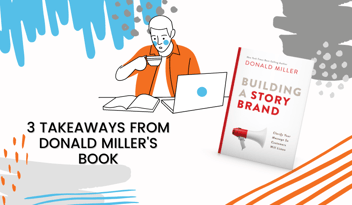Building a Storybrand Summary: How Stories Sell Solutions
The Storybrand method is a proven and effective approach for positioning your business and clarifying its message. As the founder of The StoryBrand Company, Donald Miller has helped transform companies like Apple, Nike, GE, Harley-Davidson, Starbucks, and Red Cross into iconic brands with clear identities that people love. In his new book, Building a StoryBrand, he introduces readers to seven universal story archetypes that are at the core of all enduring stories. He walks readers through how to identify which archetype they are most drawn to as well as what it means in terms of their company's focus or product offering.
Miller offers a process for creating an emotional connection to engage customers so they are able to remember who you are and exactly what you have to offer. It also gives them the ability to tell more customers about their experience with your company. This method can help drive sales, increase customer loyalty, and strengthen employee engagement by turning every interaction into a story that inspires action.
The Storybrand Framework
In the book, Miller then breaks down the whole storytelling process into seven parts, which he calls the StoryBrand Framework. It is a simple and powerful way to build your own brand's story. It provides the clarity, confidence, and courage you need as an entrepreneur to make the most of every opportunity.
The framework begins with understanding what your story is all about: who you are, how you're different from everyone else, and why someone should buy from you instead of your competitors. Once these three questions have been answered clearly and concisely for yourself and anyone at any time can repeat them back to you in one sentence without hesitation or confusion — congratulations! You now know what makes your company special enough to be worth investing in. Your story has meant that people want to hear because it solves their problems just like it solved yours once upon a time.
Storybrand 7-part Framework
Let’s get to know this framework more. While you read, try and reflect on how you can connect every part to your business.
A character
Every enduring story starts with the main character. In your brand’s story, it all starts with your customer - the people you serve. Make the story all about them and immediately your brand will resonate with their wants, needs, and desires. Our survival instinct causes us to draw closer to the things that help us survive and thrive and ignore everything else.
A lot of businesses turn into noise these days because they don’t care enough to tell the right story. They want to show you their mission, vision, and goals, but they fail to tell their customers how their brand can elevate the lives of the people they serve. Building a StoryBrand teaches us to shift our focus on our customers and turn every marketing material into a direct call that answers their problem.
Has a problem
Nearly every story has a hero and a villain. The villain starts an external problem, which makes the human being internally frustrated and philosophically untrue. Companies tend to sell solutions to external problems, but customers buy solutions to internal problems. The only reason we can help our customers to acquire our service is that internal problems or challenges are frustrating to them in some way. If we can address the frustration with very few words and offer to resolve the problem, we become a brand that customers trust.
Your brand only exists because it serves a purpose - it solves a problem. Customers lose money every time they pick the wrong solution to their problems, and over time, their awareness gets sharp in such a way that they can sense a useless ad from a mile away. Your job is to show up with the right message that changes your customer’s life for the better.
The right messages serve as direct calls that cause customers to respond in action. As you lean on their problems, your story gains the ability to sell solutions, and you fulfill a very important role.
And meets a guide
Since the hero in this story is the customer, you will position your brand as the guide that will lead the hero to the solution he's looking for. The customer knows what he wants; your brand just needs to show a clear path that will take them there.
As the guide, your marketing campaign has to spell out the solution for your hero. You need to be the kind of guide that helps them avoid failure with empathy and authority. Explain that you understand their problem and have helped others overcome it before through your products or services.
Who gives them a plan
After you've established your brand as the way to solve their problems, it's time to give them a plan. Here is where you ask for the money.
The plan needs to be clear and present everywhere in your marketing materials and it needs to be simple and easy-to-understand so they can take action right away!
For some brands, there are more technical steps that need to be taken in order to get results, but most customers just want an answer with instructions on how to do what works best for them.
The plan is the most important part of any sales pitch. It needs to be clear and concise or you'll lose them before they even hear what your product can do for them. Start with a problem that brands like yours solve, then try and simplify it as much as possible so all the focus lies on solving their problems in an elegant way: this should entice customers enough to want more information from you about how things would work out.
The plan is not the time to educate your customer. It's a chance for you, as the experienced brand qualified to solve their problem, to show them how to move forward with confidence.
And calls them to action
Once you've established in your customer's story that they can solve their problems with a clear plan from their guide, It's time for them to respond. This is where potential customers rise up to their calling and grab the solution they want themselves.
.png?width=1200&name=84292%20-%20Building%20a%20Storybrand%20Summary%20How%20Stories%20Sell%20Solutions%20(3).png)
This part of the story manifests in CTA buttons on your website. Do you want them to schedule a call, visit your shop, or get a free quote? Make it easy to see and understand. When you've got the previous parts right, you're more likely to engage the right customers. That's where it boils down, doesn't it? Get better customers - the ones who will not question your pricing, the people who will anticipate every launch you've prepared for them, your true fans. It all starts with a clear message.
This helps them avoid failure.
Engaging with your customers means that you should also empathize with them when they’re having cold feet. What if your solution doesn’t work out? And they’re right to ask that question. The best way to approach their doubts is to add some risk into the story. Let them know what can happen when they choose not to pick a solution. You don’t have to lean on it, but a little goes a long way.
Miller says that you only need a few awful, rash actions to warn your customers about failure. When customers see what you're offering and how this improves their lives, you should also include stakes in the narrative, and customer engagement should go higher. Once you establish the stakes your customers will be encouraged to resist failure.
And ends in a success
A storyteller reaches a conclusion in three major ways. Human beings want to resolve their problems in an external, internal, and philosophical manner. When our products help people achieve these things, we have the chance to establish trust and create a network where the people you help tell others how their problems can also be solved through you.
We should tell our customers what their lives are going to look like after they buy our solutions or they'll never have motivation for that. Show your customers a picture of what life will look like when their external problem is gone, what they’ll feel on the inside, and how this state should be the norm for them.
Learn How You Can Apply The StoryBrand Framework To Your Business
Start turning your brand’s story into the solution your customers are looking for. Sign up for the next StoryBrand workshop today. It’s not just a bunch of videos you and your team watch - it’s a time when you do the work that moves the needle for your business. Click on the button below to sign up!
Click here for more valuable information!





